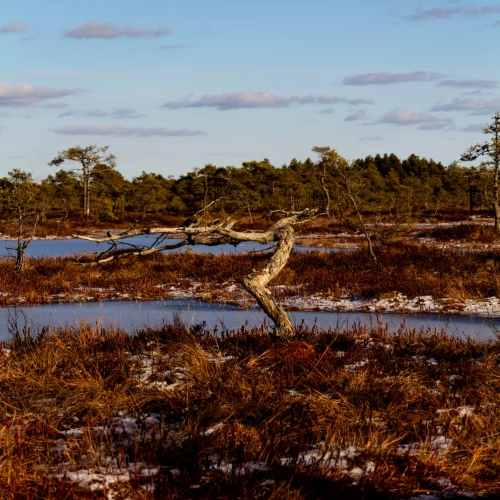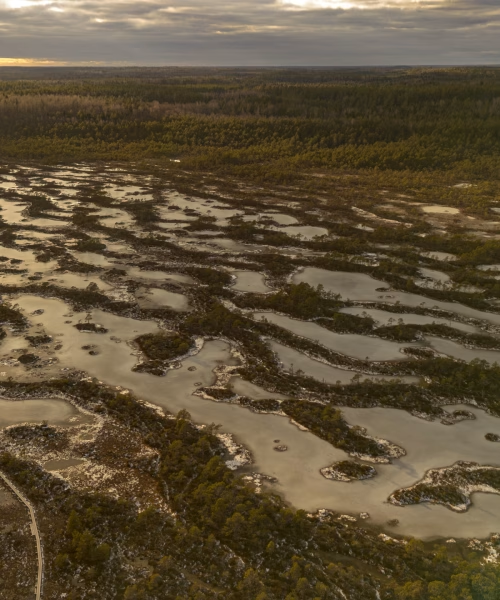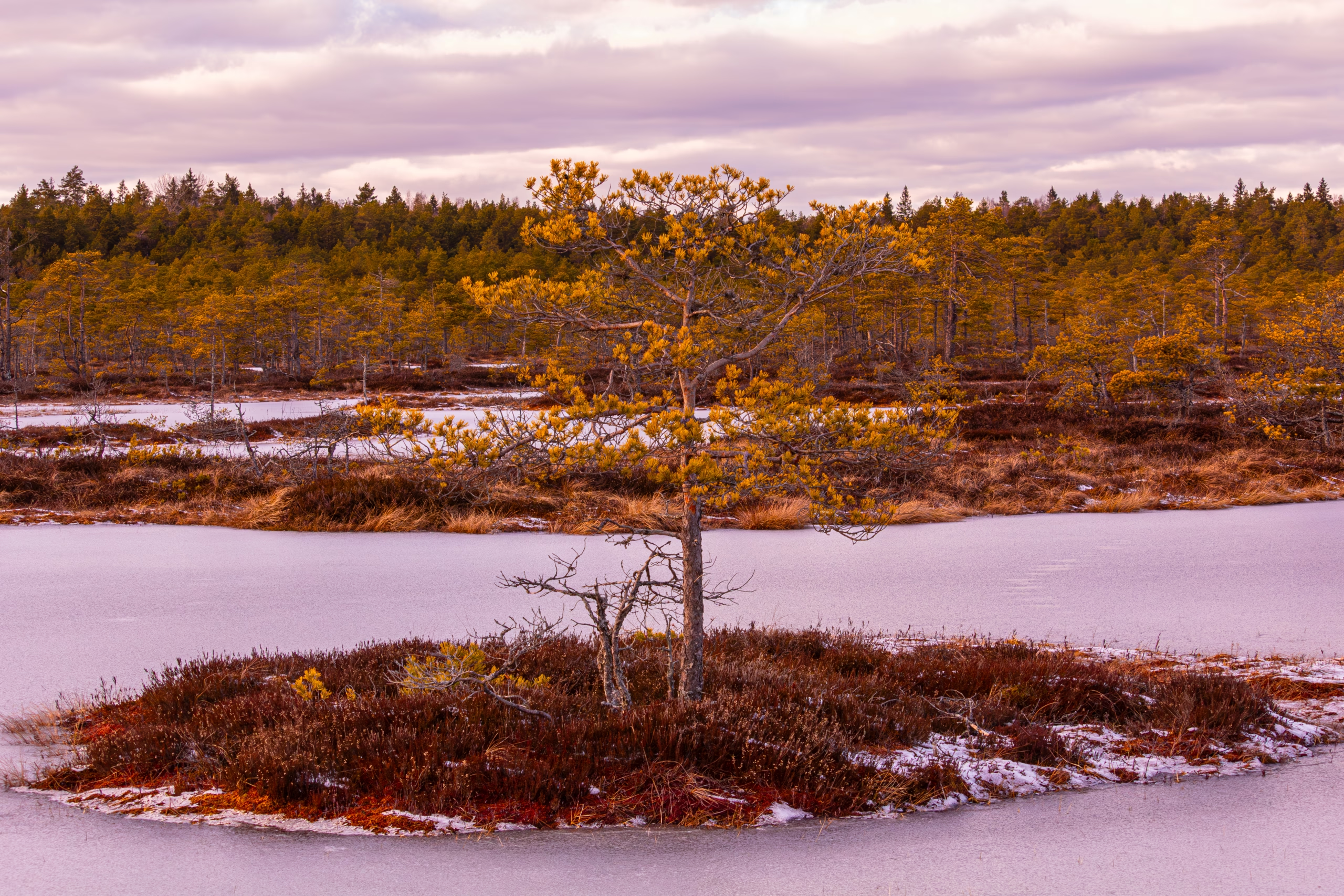Few places in Estonia capture the untouched beauty of nature quite like Kakerdaja raba. Nestled in Kõrvemaa Nature Reserve, this ancient bog is a paradise for photographers, offering an ever-changing landscape shaped by time, weather, and the delicate balance of its ecosystem. As a photographer, I find myself drawn to its mystical misty mornings, golden-hued sunsets, and the sheer tranquility that fills the air. But how did Kakerdaja raba come to be? What does it look like today? And what does the future hold for this natural wonder?

The Origins of Kakerdaja Bog
Kakerdaja raba, like most bogs in Estonia, has a history that spans thousands of years. It began forming after the last Ice Age, around 10,000 years ago, when melting glaciers left behind vast depressions that slowly filled with water. Over time, sphagnum moss and other peat-forming vegetation took over, creating the thick, sponge-like layers of peat that define the bog today. The name Kakerdaja itself is said to come from the Old Estonian word for the wood sandpiper (Tringa glareola), a bird often seen wading through the shallow waters of the bog.
Bogs like this are unique because they rely solely on rainwater for sustenance. Without streams or rivers to bring in nutrients, only the hardiest plants—like cloudberries, cranberries, and cotton grass—can survive. This nutrient-poor environment has given rise to the twisted pine trees and vast open water pools that make Kakerdaja such a mesmerizing subject for photography.
Kakerdaja Bog Today
Visiting Kakerdaja raba is like stepping into another world. The boardwalk meanders through an ever-changing landscape, where each season paints the bog in new colors.
Autumn is perhaps the most spectacular time to visit. The bog glows with fiery reds, oranges, and yellows, while the crisp morning air often brings mist that hovers over the pools, creating a dreamlike atmosphere. For a photographer, these foggy mornings and golden sunrises are pure magic.
Winter covers the bog in a thick layer of snow, transforming it into a minimalist wonderland of white, broken only by the dark silhouettes of small trees and frozen pools. The reflections on the icy surfaces add a unique element to compositions.
Spring and summer bring new life, with blooming flowers, buzzing insects, and an influx of birds. The bright green hues of fresh growth contrast beautifully with the deep blue of the sky and the mirror-like water reflections.
Whether using a drone to capture the intricate patterns of the bog from above or focusing on the minute details of frost-covered plants, there’s never a shortage of photographic opportunities here.


The Future of Kakerdaja Raba
Like many natural habitats, Kakerdaja raba faces challenges in the years ahead. Climate change poses a significant threat, as rising temperatures and changes in precipitation patterns could alter the delicate balance of this ecosystem. Drier conditions might cause the bog to shrink, affecting the flora and fauna that depend on it.
Human activity is another concern. While Estonia does a great job of maintaining its natural areas, increasing tourism could lead to wear and tear on the boardwalks and disturbances to wildlife. As photographers and nature lovers, we have a responsibility to tread lightly—sticking to the designated paths, minimizing noise, and leaving no trace.
That said, there’s hope. Conservation efforts are ongoing, and awareness about preserving Estonia’s bogs is growing. With careful management and respect for nature, Kakerdaja raba will hopefully remain a breathtaking sanctuary for future generations of photographers and nature enthusiasts alike.

Final Thoughts
Kakerdaja raba is more than just a location; it’s a living, breathing work of art that changes with every passing day. As a photographer, it offers endless opportunities to capture the raw beauty of Estonia’s wilderness. Whether standing in the quiet solitude of a misty morning or marveling at the rich colors of an autumn evening, this bog never fails to inspire.
The challenge—and the reward—is to document its story while ensuring that it remains as pristine and enchanting as it is today. After all, the best photographs aren’t just about what we see—they’re about what we choose to protect.
